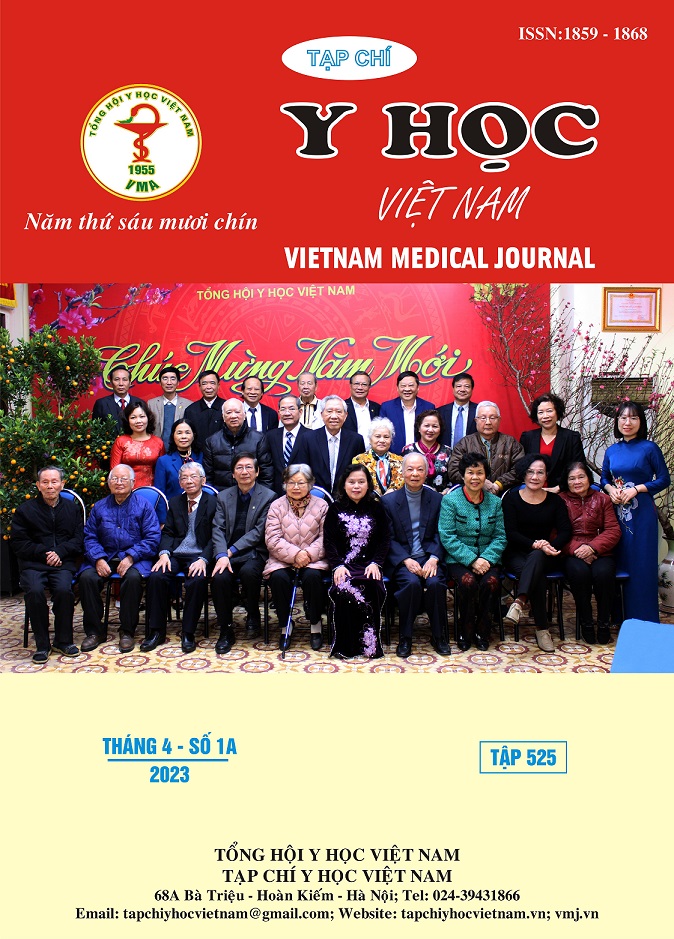IMPACT OF EDUCATIONAL INTERVENTION ON ATTITUDE TOWARD PREVENTING EXPOSURES TO BLOOD AND BODY FLUIDS AMONG FINAL-YEAR NURSING STUDENTS IN NAM DINH UNIVERSITY OF NURSING
Main Article Content
Abstract
Positive attitude to preventing occupational exposure helps nursing students correct their behavior in the prevention of exposure to blood and body fluids. Objective: To evaluate the effectiveness of the educational intervention on attitude toward preventing exposures to blood and body fluids among final-year nursing students in Nam Dinh University of Nursing. Subject and method: 182 final-year full-time nursing students were randomly selected to participate in discussions through clinical situations in small groups and had their knowledge assessed with the same questionnaires at three different times (pre-intervention, right after intervention and 1 month after intervention). Results: General mean score of pre-intervention attitude is 3,69 ± 0,22 points, increase to 4,71 ± 0,17 points right after the educational intervention and maintain 4,68 ± 0,43 points after 1-month of the intervention. The difference is statistically significant with p < 0.001; In particular, the difference in attitude scores between right after intervention and 1- month after intervention was not statistically significant. Conclusion: The clinical-based program of the educational intervention to improve attitude of the final-year nursing students towards preventing exposure to blood and body fluids achieved good results and sustainability.
Article Details
Keywords
attitude, nursing students, exposure, educational intervention
References
2. Bộ Y tế (2012). Tài liệu đào tạo phòng và kiểm soát nhiễm khuẩn, Nhà xuất bản y học, Hà Nội.
3. Nguyễn Lân Viêt và các cộng sự. (2005). Đánh giá nhu cầu đào tạo dự phòng phơi nhiễm nghề nghiệp đối với HIV ở các trường Đại học Y tại Việt Nam.
4. Yosria EL- Syed Hossein (2015). Knowledge, attitude and practice in nursing student toward patients with hepatitis C. International Educational Scientific Research Journal, 1(1), p. 19-25.
5. H. Joanna (2009). Health Belief Model. Introduction to Health Behaviour Theory, Amazon.
6. Tigabu Birhan Kassa (2017). Knowledge, Attitude and Practice towards Hepatitis B Virus Prevention and its Associated Factors among Private Medical/Health Sciences College Students, Bahir Dar, Ethiopia. Research square.
7. H. Sabane, R. Dixit và P. Durge (2011). "Impact of knowledge about Post exposure prophylaxis among nursing students - A cross sectional study. H e a l t h l i n e, 2(1), pp. 27-30.
8. Dixit Sanjay and et al. (2010). Impact of Educational Intervention Measures on Knowledge regarding HIV/ Occupational Exposure and Post Exposure Prophylaxis among Final Year Nursing Students of a Tertiary Care Hospital in Central India. Online Journal of Health & Allied Sciences, 8.
9. F. R. Souza-Borges, L. A. Ribeiro và L. C. Oliveira (2014). Occupational exposures to body fluids and behaviors regarding their prevention and post-exposure among medical and nursing students at a Brazilian public university. Rev Inst Med Trop Sao Paulo, 56(2), pp. 157-63.
10. Melek Talas (2009). Occupational exposure to blood and body fluids among Turkish nursing students during clinical practice training: Frequency of needlestick/sharp injuries and hepatitis B immunisation. Journal of clinical nursing, 18(10), pp. 1394-403.


